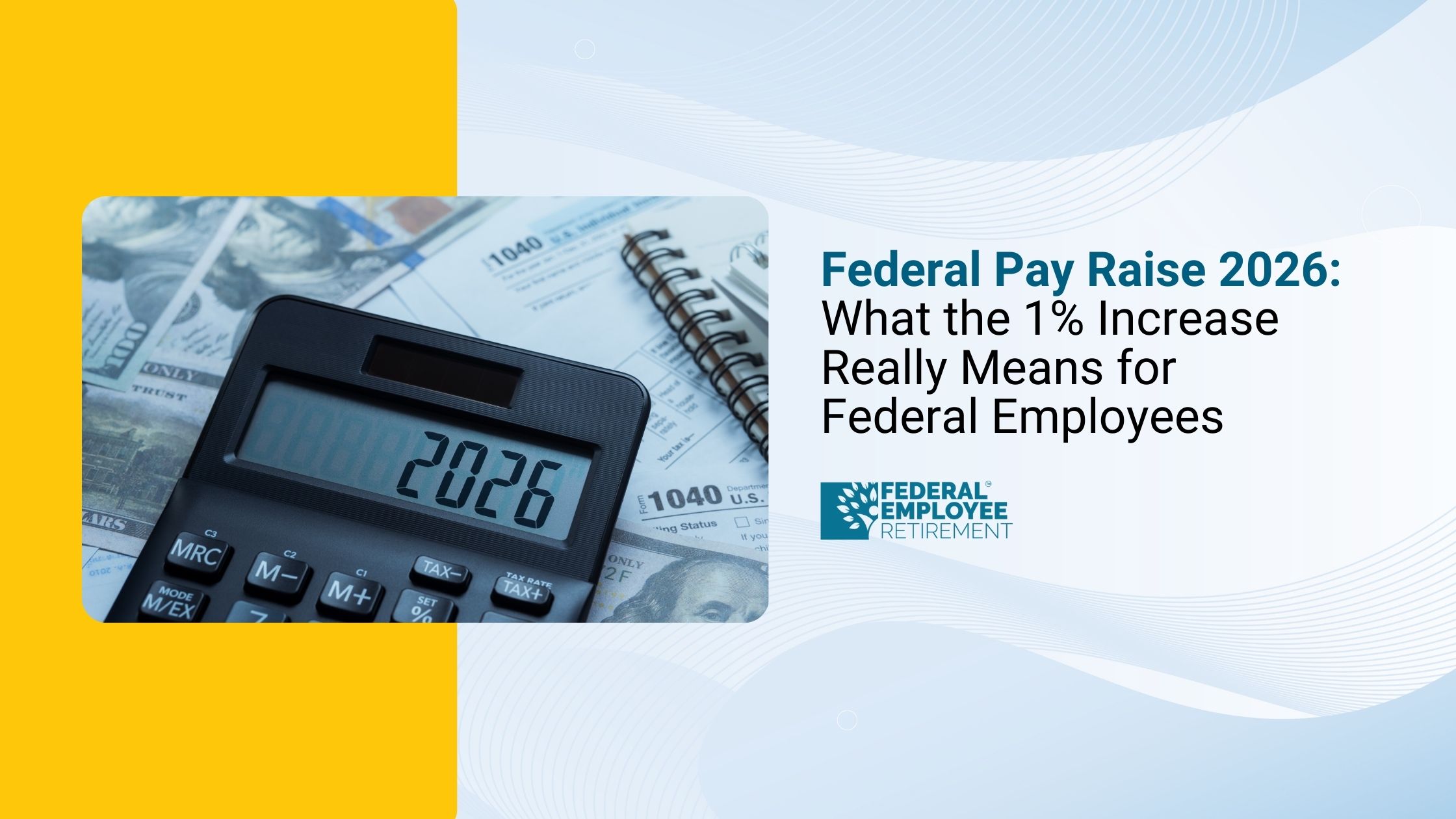You’re not alone; 4,359 federal employees booked their free review.

TSP vs. Roth IRA: What's the Difference?
Are you trying to choose the best retirement savings plan? If you work for the federal government or serve in the military, you've likely heard about the Thrift Savings Plan (TSP). Like the more familiar Individual Retirement Account (IRA), the TSP also comes in a Roth version, meaning your contributions are made with after-tax dollars, and withdrawals during retirement are tax-free.
The Thrift Savings Plan (TSP) is a retirement savings and investment program specifically tailored for federal employees and members of the U.S. military.
A Roth IRA is a retirement account that allows for tax-free withdrawals during retirement.
Both the TSP and Roth IRA offer valuable benefits, but which one is right for you? Below, we'll break down the key features of each to help you make an informed decision about where to invest your retirement savings.
1. What is a TSP?
The Thrift Savings Plan (TSP) is a retirement savings and investment plan exclusively designed for federal employees and members of the United States military. It operates similarly to the 401(k) plans offered by private companies, providing a tax-advantaged way to save for retirement.
2. What is a Roth IRA?
A Roth IRA is a retirement account that offers tax-free withdrawals in retirement. Unlike traditional IRAs, contributions to a Roth IRA are made with after-tax dollars, meaning you don't get a tax break upfront.
To contribute to a Roth IRA, you must have earned income during the year and meet certain income limits. The maximum amount you can contribute annually is limited and depends on your tax filing status and Modified Adjusted Gross Income (MAGI).
Introducing Federal Pension Advisors, we are your dedicated partner, we specialise in connecting federal employees and retirees with experienced financial advisers who help you select a rewarding pension plan and take the next step towards financial freedom. If you have any other problem is IRA or TSP or TSP and Roth IRA, then you are welcome to take our free consultation service, which is not only for TSP or IRA but also there are many more services we offer such as, Wealth management, Retirement Planning, Investment Advice etc.
Our independent advisors are here to prepare you for and support you through a fulfilling retirement. You can also check out our tools,
1. TSP Calculator
2. Paycheck Calculator
3. or calculate pension
3. Is a TSP the same as a Roth IRA?
The Thrift Savings Plan (TSP) and Roth Individual Retirement Account (Roth IRA) are both retirement savings accounts, but they have distinct features and benefits.
The TSP is designed specifically for federal employees and members of the U.S. military. Contributions to the TSP are typically made pre-tax, reducing your taxable income. Additionally, the TSP often offers employer-matching contributions. However, the TSP has a limited range of investment options, and you may be required to take minimum distributions (RMDs) at age 72.
On the other hand, the Roth IRA is available to anyone with earned income, regardless of employment status. Contributions to a Roth IRA are made after tax, but qualified withdrawals are tax-free in retirement. The Roth IRA offers a wider range of investment options and does not have RMDs.
Also read: What Are 2025 IRMAA Brackets - 2024 And 2026
4. Key Differences Between a Roth TSP and a Roth IRA
When comparing a Thrift Savings Plan (TSP) and a Roth IRA, it's crucial to understand their core differences in contribution limits, tax benefits, and withdrawal guidelines. Both are designed for retirement savings but cater to different needs and offer distinct advantages.
1. Tax Treatment
1. TSP (Traditional): Contributions are made pre-tax, lowering your taxable income for the year. However, withdrawals during retirement are taxed as regular income.
2. Roth IRA: Contributions are made with after-tax dollars, providing no immediate tax benefits. However, qualified withdrawals in retirement are tax-free.
2. Contribution Limits
1. TSP: In 2024, you can contribute up to $23,000 (including catch-up contributions for those 50+). This plan is exclusively available to federal employees and military personnel.
2. Roth IRA: The annual contribution limit is lower, set at $6,500 (or $7,500 for those 50+). Eligibility is open to anyone with earned income, though it phases out based on income levels.
3. Eligibility
1. TSP: Available only to federal employees and members of the military.
2. Roth IRA: Available to anyone with earned income, but eligibility to contribute reduces for higher-income earners.
4. Investment Options
1. TSP: Offers limited investment options, typically government-managed funds that are low-cost and conservative.
2. Roth IRA: Provides a broad range of investment choices, including stocks, bonds, mutual funds, and ETFs, offering more flexibility for investors.
5. Employer Contributions
1. TSP: Federal employers often match contributions up to a certain percentage, which can significantly boost your retirement savings.
2. Roth IRA: There is no employer matching, as this account is individually owned.
6. Required Minimum Distributions (RMDs)
1. TSP (Traditional): RMDs are required starting at age 73, meaning withdrawals must begin, and they will be taxed.
2. Roth IRA: RMDs are not required for the original account holder, providing more flexibility for retirement planning.
7. Withdrawal Guidelines
1. TSP: Early withdrawals before age 59½ generally incur penalties unless you meet specific criteria, such as retiring after age 55.
2. Roth IRA: Contributions can be withdrawn anytime without penalty, and earnings can be withdrawn tax-free after age 59½ if the account has been open for at least five years.
5. Similarities Between a TSP and a Roth IRA?
The Thrift Savings Plan (TSP) and Roth Individual Retirement Account (Roth IRA) have distinct features, but they also share several key similarities:
1. Retirement Savings Vehicles: Both TSP and Roth IRA are designed to help you save for retirement. They offer a structured way to invest and grow your savings over time.
2. Tax-Advantaged Growth: Both plans provide tax advantages. While TSP contributions are typically made pre-tax, reducing your taxable income, Roth IRA contributions are made after-tax. However, qualified withdrawals from both accounts are tax-free in retirement.
3. Investment Options: Both TSP and Roth IRA offer a variety of investment options, such as stocks, bonds, and mutual funds. This allows you to diversify your portfolio and manage your risk.
4. Flexibility: Both plans offer flexibility in terms of contributions and withdrawals. You can adjust your contributions as needed and choose from different withdrawal options in retirement.
5. Long-Term Savings: Both TSP and Roth IRA are intended for long-term savings. It's generally recommended to start contributing early and maintain consistent contributions to maximize the benefits of these retirement plans.
6. Should I Roll Over My Roth TSP to a Roth IRA?
If you're nearing the age of 72 and have a Roth TSP, consider rolling it over to a Roth IRA. However, before making this decision, carefully evaluate the investment options and fees offered by the Roth IRA provider. Consult with a financial advisor to determine if this is the best choice for your retirement goals.
In Conclusion, Both the TSP and Roth IRA offer distinct advantages that can help you optimize your retirement savings. The TSP is a strong option for federal employees and military personnel due to its higher contribution limits, employer-matching contributions, and cost-effectiveness. It's ideal for those who want to maximize contributions with lower fees while benefiting from employer matches.
In contrast, the Roth IRA provides greater flexibility in both investments and withdrawal options. With a wider variety of investment opportunities and no required minimum distributions, it's better suited for those seeking more control over their retirement funds and a customizable approach to saving.
By understanding the benefits and limitations of both the TSP and Roth IRA, you can choose the plan that best aligns with your long-term financial goals and helps secure your retirement.
FAQ'S
Is a Roth IRA or TSP Better?
Roth IRA:
- Provides tax-free withdrawals in retirement.
- Contributions are made with after-tax dollars, allowing your earnings to grow tax-free.
- You can withdraw contributions at any age without penalty.
- Has annual contribution limits ($6,500 for individuals and $13,000 for couples in 2023).
TSP:
- Offers tax-deferred growth on contributions and earnings.
- Contributions are made with pre-tax dollars, reducing your taxable income.
- Higher contribution limits ($22,500 for individuals and $45,000 for couples in 2023).
- Includes matching contributions from the government.
- Offers additional benefits for military personnel, such as survivor benefits and disability retirement.
Why Convert a TSP to a Roth IRA?
- Tax-free withdrawals: Converting your TSP to a Roth IRA enables tax-free withdrawals in retirement, potentially saving a significant amount in taxes.
- Flexibility: Roth IRAs offer greater flexibility since you can withdraw contributions at any time without penalty.
- Estate planning: Roth IRAs are beneficial for estate planning as they allow assets to pass to beneficiaries tax-free.
Disadvantages of a Roth TSP:
- Higher contribution limits: While the TSP allows higher contributions than a Roth IRA, it may be challenging to reach these limits if you have other financial obligations.
- Limited investment options: The TSP provides fewer investment options compared to a Roth IRA, limiting portfolio diversification.
- Less flexibility: TSPs are more restrictive, as you can’t withdraw your contributions without penalty until age 59 ½.


Get Updated
Subscribe to our weekly updates for the latest on retirement planning, federal benefits, exclusive webinars, and more!
Download Federal Retirement: Step-by-step Checklist
This comprehensive guide will help you understand your federal benefits, optimize your savings, and plan for a comfortable future.



.png)








